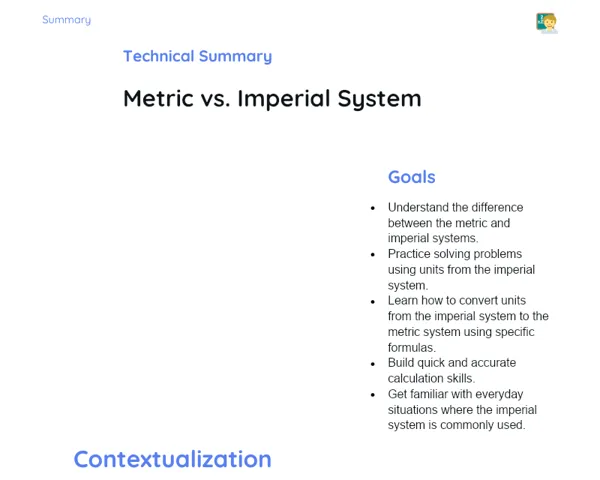Objectives
1. 🎯 Grasp and compute the area of a hexagon, whether it's a regular shape or an irregular one.
2. 🎯 Cultivate practical skills for applying area calculations in everyday contexts such as interior design and architecture.
3. 🎯 Enhance logical reasoning and the ability to tackle complex geometric problems.
Contextualization
Did you know the hexagon is one of the most efficient shapes found in nature? Take honeycombs for instance; the hexagonal shape isn't just a coincidence. This geometry enables optimal use of space, requiring minimal wax to store maximum honey. This real-world example highlights how understanding the area of a hexagon can help us make better use of resources and spaces, not just in nature but also in various design and technological fields.
Important Topics
Regular Hexagon
A regular hexagon is a geometric figure with six equal-length sides and six internal angles of 120 degrees. This symmetrical shape simplifies area calculation since all sides and angles are the same.
-
Area formula for a regular hexagon: A = (3√3)/2 * L², with L being the length of one side.
-
Regular hexagons are frequently used in areas that require balance and efficient space utilization, such as flooring and mosaic designs.
-
The regular hexagon's symmetry simplifies designs and engineering across various fields, ensuring an even distribution of loads or materials.
Irregular Hexagon
In contrast to the regular hexagon, an irregular hexagon has sides of different lengths and internal angles that deviate from the 120-degree norm. Calculating the area can be more complex, often requiring the hexagon to be divided into triangles, quadrilaterals, or other familiar shapes for which we already have area formulas.
-
To find the area of an irregular hexagon, one method is to partition it into simpler shapes, calculate their areas, and then aggregate them.
-
Being able to calculate the area of irregular figures is crucial for practical tasks, like mapping land or assessing farm or property sizes.
-
This skill enhances the ability to simplify complex shapes into manageable parts, which is vital in math and science.
Practical Applications of Hexagon Area Calculation
Determining the areas of hexagons goes beyond theory; it has various real-life applications in everyday scenarios and across professions. From architectural design to engineering, mastering area calculations is key.
-
In architecture, area calculations assist in maximizing space and resource allocation, ensuring that projects are efficient and effective.
-
In interior design, understanding spaces and shapes allows for the creation of functional and aesthetic environments, factoring in aspects like movement and furniture arrangement.
-
In environmental sciences, knowing how to calculate areas supports territory assessments in research, as well as managing natural assets like parks and reserves.
Key Terms
-
Regular Hexagon: A hexagon where all sides and internal angles are equal.
-
Irregular Hexagon: A hexagon with varying side lengths and internal angles.
-
Area of a Hexagon: The space enclosed within the hexagon's boundaries, measured in square units.
For Reflection
-
How does the symmetry of a regular hexagon aid in designing structures and objects compared to irregular shapes?
-
What challenges did you face while calculating the area of an irregular hexagon, and how did you work through them?
-
In what ways can you apply knowledge of geometric area calculations in your daily life or future career?
Important Conclusions
-
We revisited our understanding of the area of a hexagon, delving into both regular and irregular shapes along with their real-life applications in areas like architecture and design.
-
We explored how the symmetry and space efficiency of regular hexagons play a crucial role in various contexts, including their natural occurrence in honeycombs.
-
Mastering the calculation of areas for complex shapes like irregular hexagons not only sharpens mathematical skills but also emphasizes the significance of critical thinking and problem-solving in real-world situations.
To Exercise Knowledge
- Create a Concept Map: Use hexagons to develop a concept map illustrating geometry's relevance in various aspects of your life. 2. Room Design: Sketch a room layout with hexagons to optimize space, calculating the total area you’ve created. 3. Local Exploration: Take a walk and capture photographs of hexagonal shapes in your neighborhood, like air conditioning grids or manhole covers, and compute their areas.
Challenge
🌟 Creative Hexagon Challenge 🌟: Using recyclable materials, design an item mainly composed of hexagons. This could be a storage box, a desk organizer, or whatever you imagine. Document your journey with photos and videos, and at the end, showcase your creation, explaining how you calculated and utilized the areas of the hexagons.
Study Tips
-
📚 Constant Review: Make flashcards with formulas and properties of hexagons to review consistently and keep your knowledge fresh.
-
💡 Practical Applications: Whenever feasible, apply area calculations in real situations, like organizing your room or assisting with home improvement tasks.
-
🤝 Study Group: Collaborate with friends to discuss and solve problems related to hexagon areas, helping each other grasp the concepts better.


